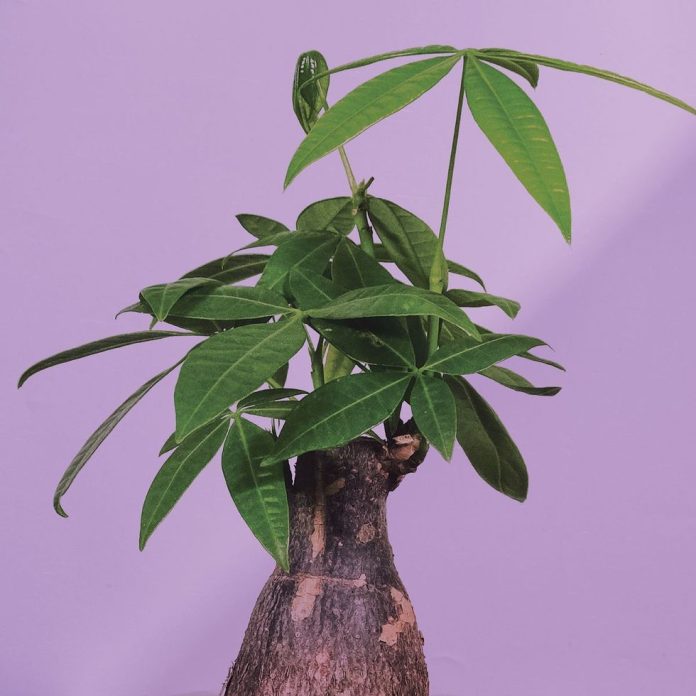Defined by large, glossy green leaves and a woody trunk, the money tree is a popular indoor tree — not only for its beauty, but because it’s easy to keep healthy and believed to bring good luck into the home.
The hard-to-kill houseplant is typically recognized for its braided trunk, but the unique style isn’t actually a natural feature of the plant; most money trees on the market are actually multiple plants that have had their trunks braided together during growth. Also known as pachira aquaticas, the money tree is a tropical wetland tree that’s native to Central and South America. They will typically grow between six and eight feet tall when kept indoors, but can grow over 60 feet tall in the wild.
To help keep your money tree looking its best, we’ve rounded up plant care tips — touching on everything from soil and watering to the best sunlight conditions. Plus, keep reading to find step-by-step guides for repotting, propagating and braiding your money tree.
Why Are Money Trees Considered Good Luck?
A symbol of prosperity, good fortune and positive energy, the money tree has become a popular gift across cultures and is considered one of the best feng shui plants. The ancient legend originating from Taiwan goes something like this: Shortly after praying for prosperity, a man discovered the money tree. The plant is easy to propagate, and so the man cultivated many more trees and soon made a fortune selling them to others.
Each stem has five shiny green leaves, which are said to symbolize the five elements of balance: earth, fire, water, wind and metal. While some stems will likely have six leaves, seven-leaves stems are extremely rare and thought to bring extra luck to your home. It’s also believed that the braided trunk can trap fortune. While these truths cannot be easily proven, the money tree remains a popular houseplant for its beauty and hard-to-kill nature.
Money Tree Plant Care Tips
☀️ Sunlight
Bright, indirect sunlight is best for a healthy money tree — which makes it easy to find the perfect spot for your plant. Consider a plant stand in the living room or on the floor of a home office, as long as the areas don’t receive too much direct sunlight. Your plant may adjust to lower lights (although too little light will slow growth and cause the leaves to turn yellow), but direct sunlight will quickly scorch the leaves.
🪴 Soil
Use a liquid houseplant fertilizer at half strength once a month during the summer months, which is the money tree’s growing season. If you’re repotting your money tree, it’s important to know that money trees prefer a well-draining potting mix. The best soils might include sand, pebbles or per lite, or you can find a soil made specifically for money trees.
💦 Water
When it comes to money plant care, overwatering is one of the most common mistakes that plant parents make, according to Just Add Ice. Water your money plant once every one to two weeks, or when the soil volume is 50 to 75% dry. The plant will likely need water more frequently during spring and summer months. Be sure that your planter has drainage holes, so the roots aren’t sitting in excess water.
PLANT CARE TIP: Rotate your tree every time you water it to ensure even growth.
🔥 Temperature
Your money tree will grow best in a space that’s between 60º and 75º Fahrenheit, according to West Coast Gardens. Keep your plant away from heat and air conditioning vents, as well as any drafty windows or doors.
✂️ Pruning
If your money tree is growing out of control (it’s becoming too tall or too wide for your space), you can trim the leaves. Cutting brown or wilted leaves will actually promote healthy growth. Hint: Save healthy cuttings for propagation (instructions below).
Related Story
How to Avoid Common Money Tree Problems
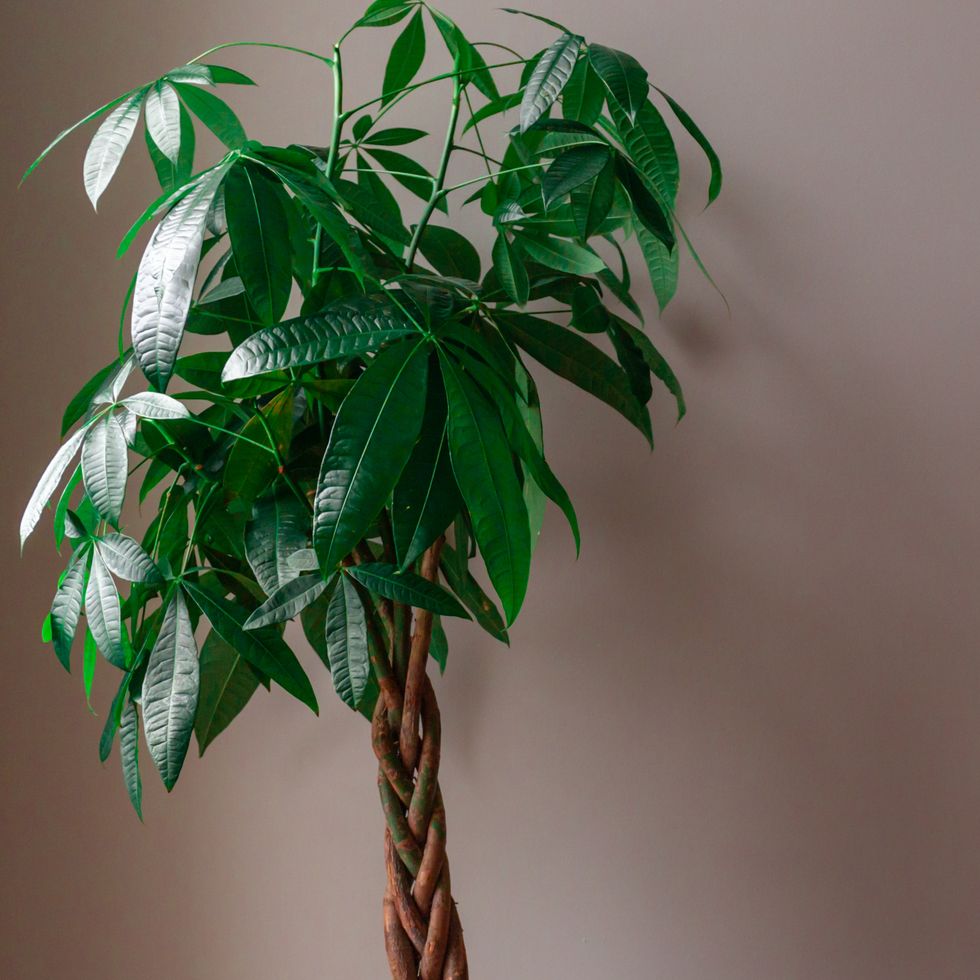
Matthew Lloyd//Getty Images
- Yellow leaves: You may be overwatering your plant, or it may be getting too much sunlight. Try sticking to a consistent watering schedule or moving your planter into more indirect sunlight.
- Leaf drop: You’re watering your plant too much or too little. It’s important to water your plant on schedule and not to wait until the soil has dried out completely. Temperature fluctuations, too much sunlight or insect infestations can also be factors. Note that some leaf loss is normal during growth.
- Root rot: Overwatering can cause root rot. If you notice leaves becoming droopy, the trunk becoming soft and slimy or an unpleasant smell, act quickly before the root rot becomes fatal. Repot your plant quickly!
- Insect infestation: Aphids, spider mites and mealybugs are particularly fond of money trees. If you notice an insect infestation (yellow leaves are a telltale sign), you can use an insecticidal soap with warm water to help eliminate the tiny pests.
Shop Money Tree Plants
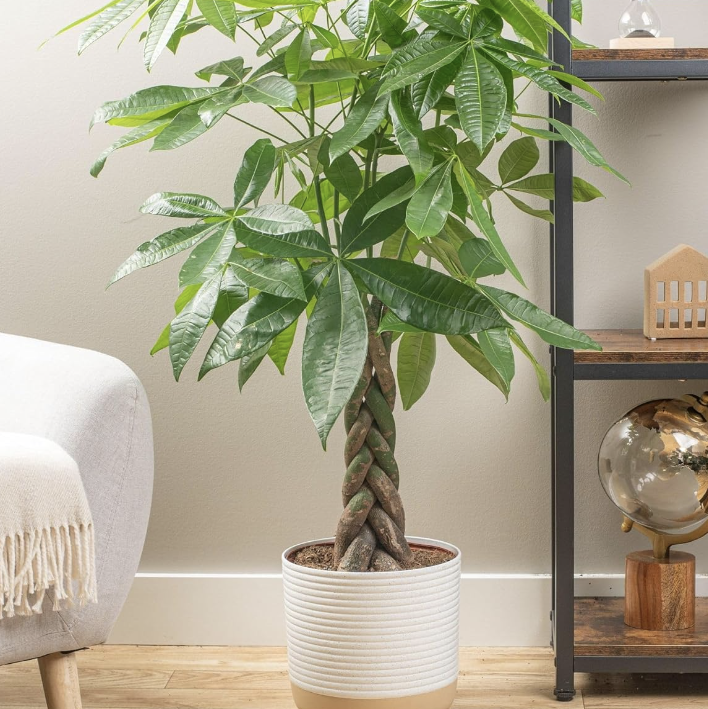
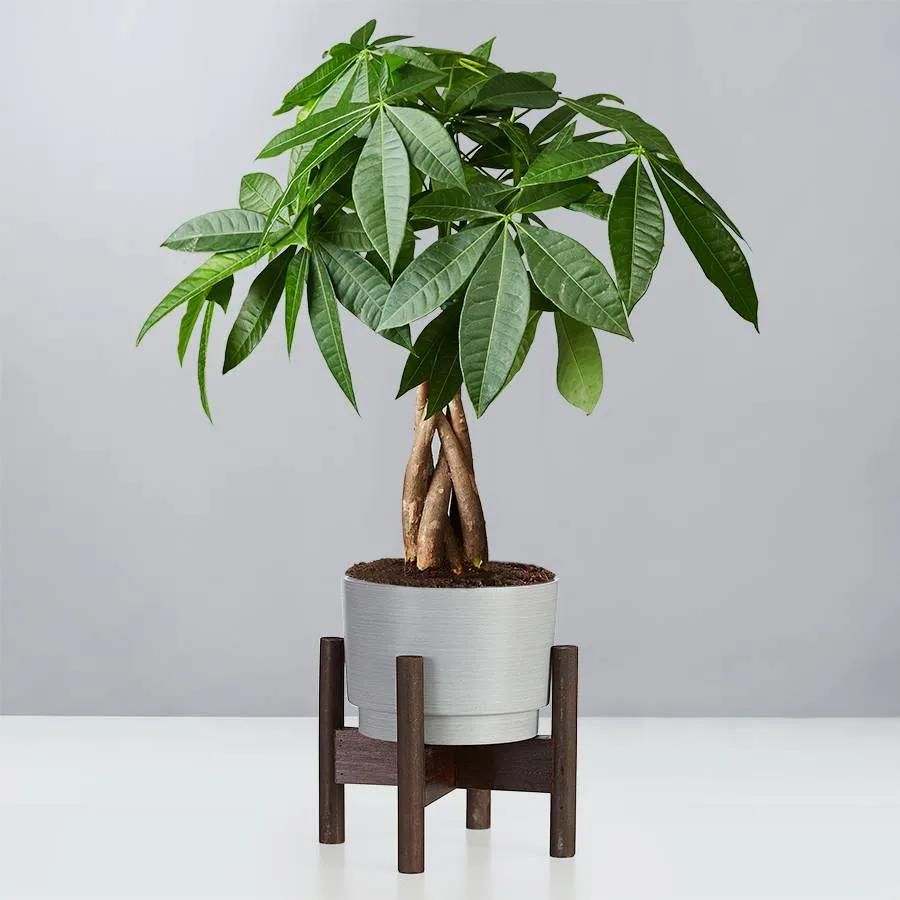
Plants.com Money Tree
Now 23% Off
Credit: plants.com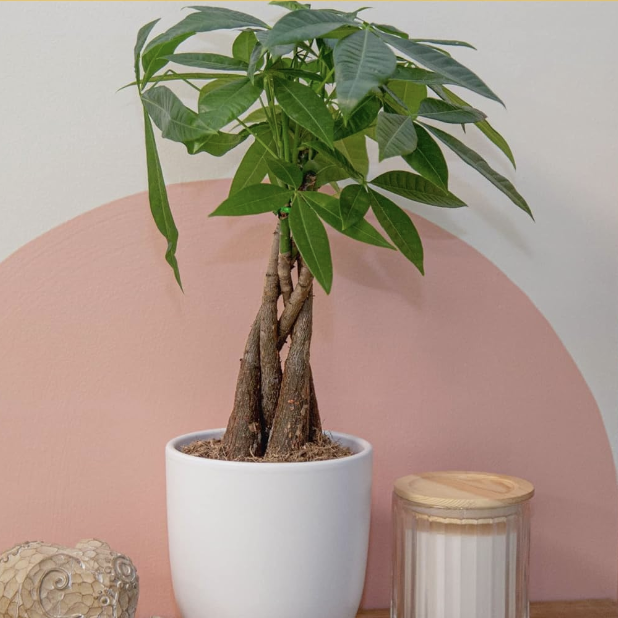
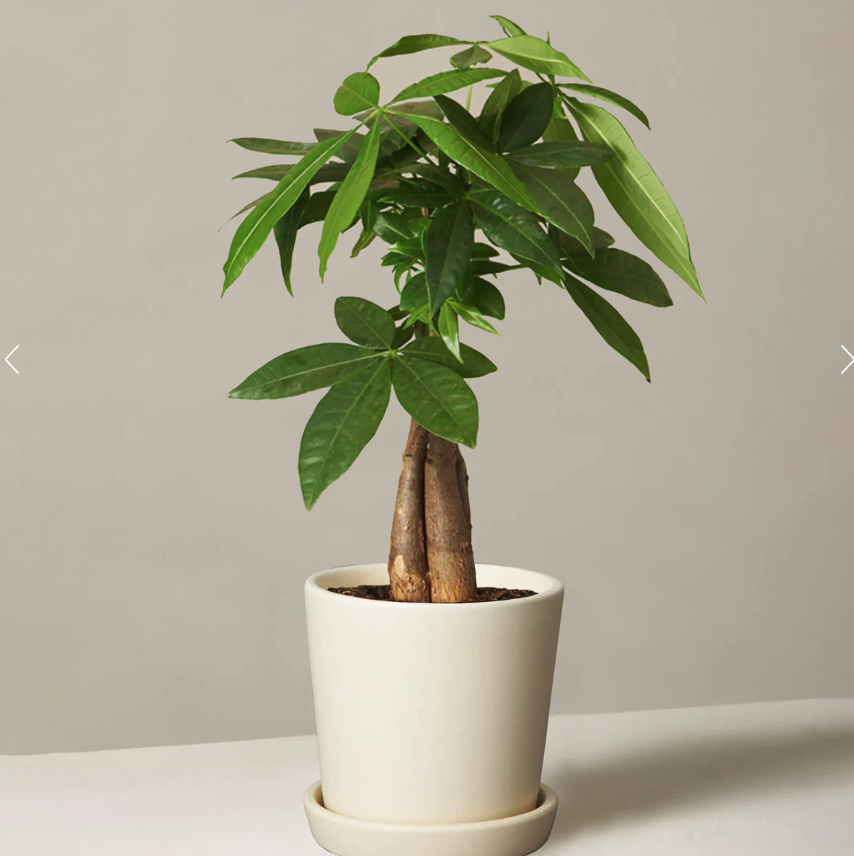
The Sill Money Tree
Credit: The Sill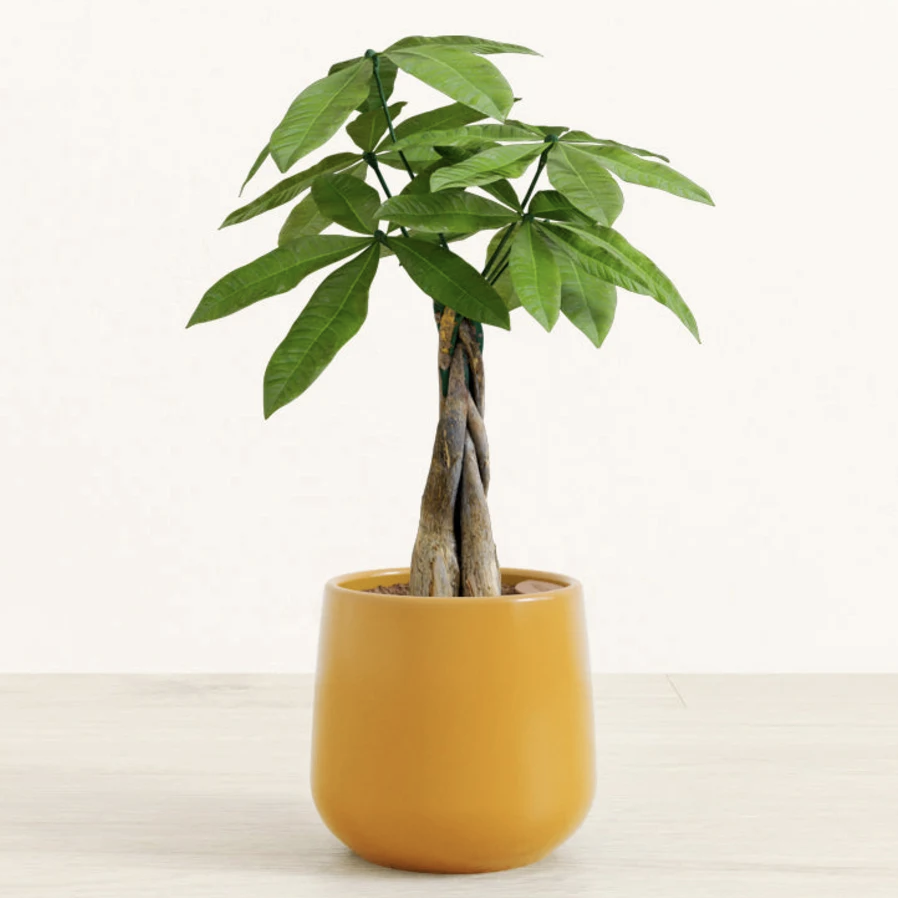
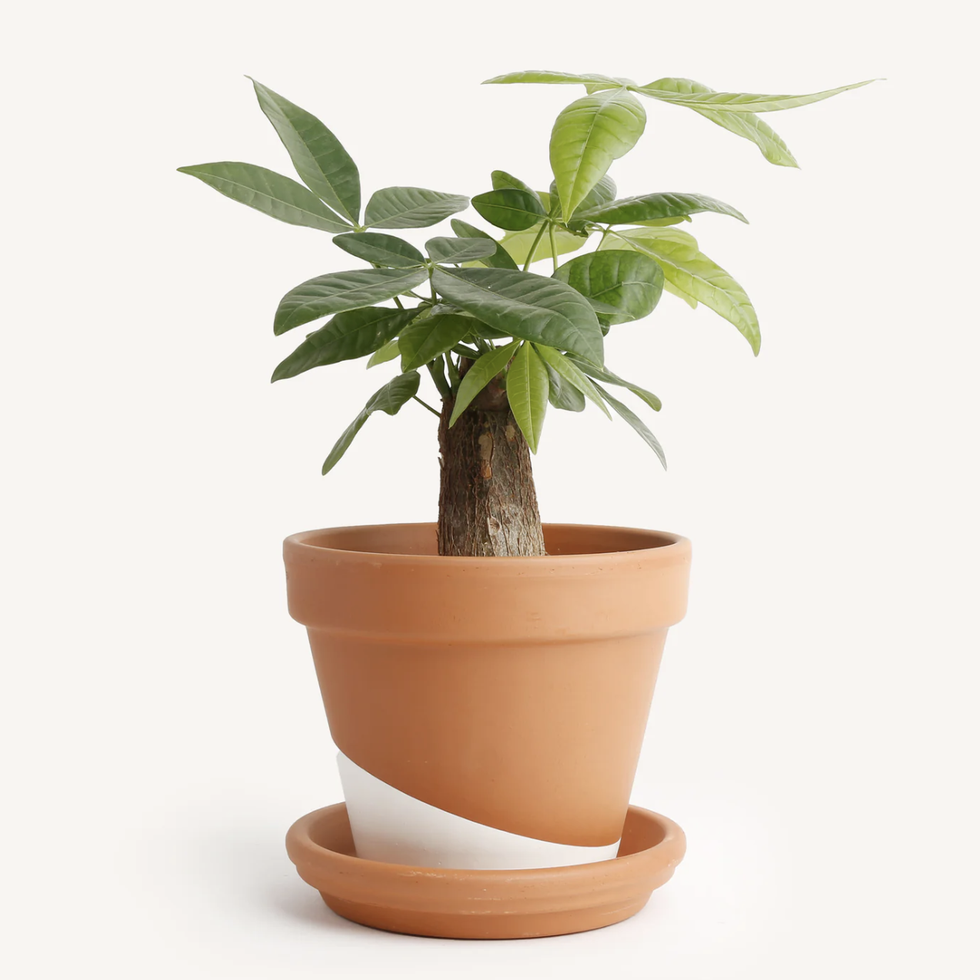
How to Repot a Money Tree Plant
It’s a good idea to repot your money tree every two or three years, but you may have to do it sooner if 1. Your money tree is growing much larger than its current pot or you’ve noticed it’s stopped growing completely. 2. You notice signs of root rot. The best time to repot your money tree is during the spring, but don’t worry: It’s easy!
- Find a pot with good drainage that’s one or two sizes bigger than the current one. If you want to keep using the same planter, you can trim some root growth — be careful not to trim more than 25% of the roots.
- Loosen the roots gently with your hands. Toss the old potting mix and remove as much as possible from the roots.
- Fill the bottom of your planter with a layer of fresh potting mix.
- Center your money tree into the planter, filling in the surrounding space with potting mix until it’s secure.
How to Propagate a Money Tree Plant
As explained in the ancient legend, money trees are pretty easy to propagate. While you can propagate the houseplant using stem cuttings or seeds, here’s how to grow a new money tree using a healthy cutting and water.
- Using sharp scissors or pruning sheers, cut a healthy branch with several leaf nodes. Trim the bottom leaves.
- Leave the cutting aside for a few days.
- Place the cutting in a small cup of water in bright, indirect light.
- Change the water every few days.
How to Braid a Money Tree

Socha//Getty Images
If you bought a mature money tree, chances are the trunk is already braided. If you have young money trees, it’s relatively simple to braid the money trees yourself. You’ll need anywhere from three to six money trees that are young and healthy (a young money tree should have shoots that are about 15 to 16 inches tall).
- Gently, slowly and loosely braid the trunks together just as you would hair.
- Use string or tape to keep the ends together.
- Continue this process as your money tree grows, but note that it may be several months until your tree needs to be braided again.
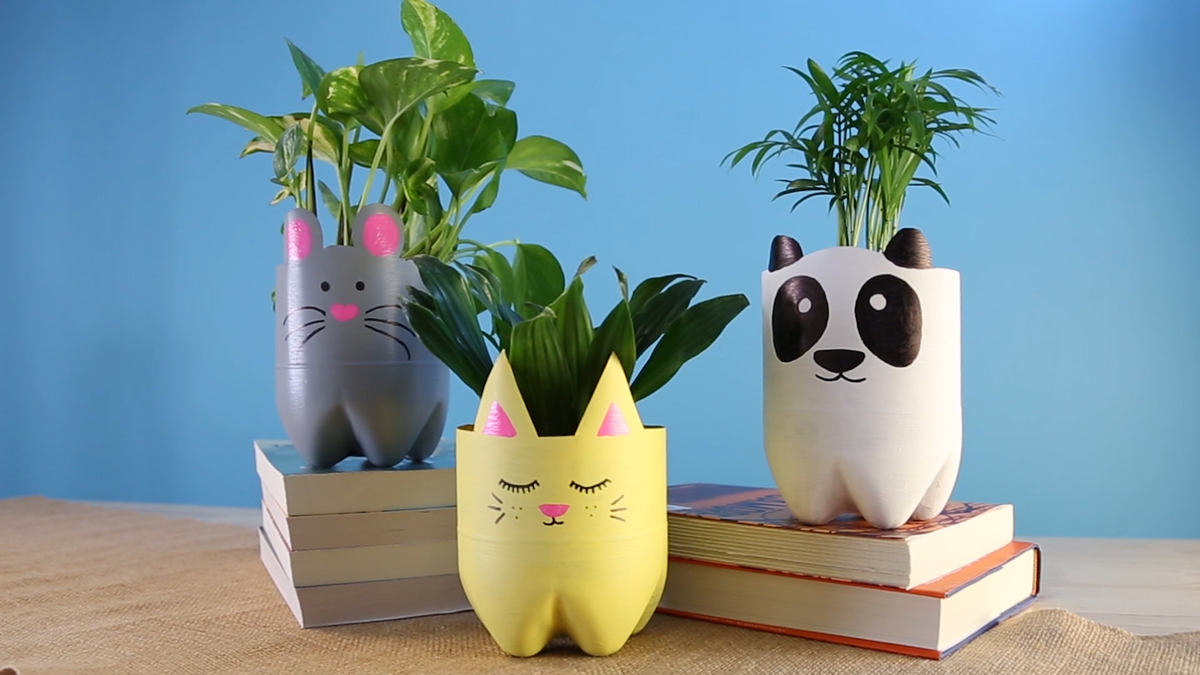
Alyssa Gautieri (she/her) is the associate lifestyle editor for Good Housekeeping, where she covers all things home and interior design. Prior to joining GH in 2022, she wrote for publications including ELLE Decor, Chairish, BobVila.com, Unique Homes Magazine and LODGING Magazine, in addition to crafting product copy for home brands like BrylaneHome and VIGO Industries.
www.goodhousekeeping.com
https://www.goodhousekeeping.com/home/gardening/a40722783/money-tree-care/

